The Vampire: The Eternal Struggle Unleashed Kickstarter is funded at the base level, so now we take aim for some stretch goals! We asked one of the designers Mike Nudd to tell some about his feelings for these sets, and if he has any favorite cards.
To the Kickstarter: Vampire: The Eternal Struggle Unleashed
More information and previews: Product pages
Kickstarter launched! These are the cards with changes
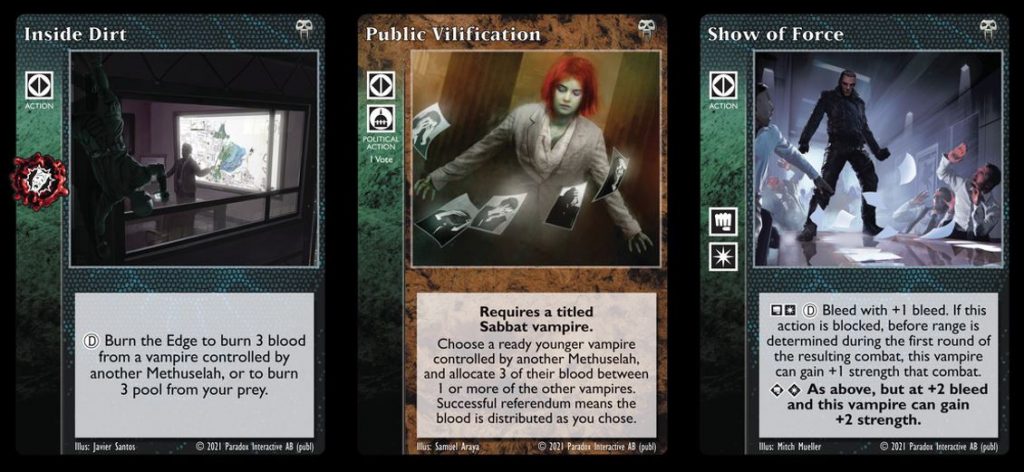
Hi Vampire: The Eternal Struggle fans!
We are so excited over the Unleashed Kickstarter campaign! The three cards above is the cards that have functional changes. Below is a list of all cards that have changes – all will be previewed very soon. All previews are collected on each product page.
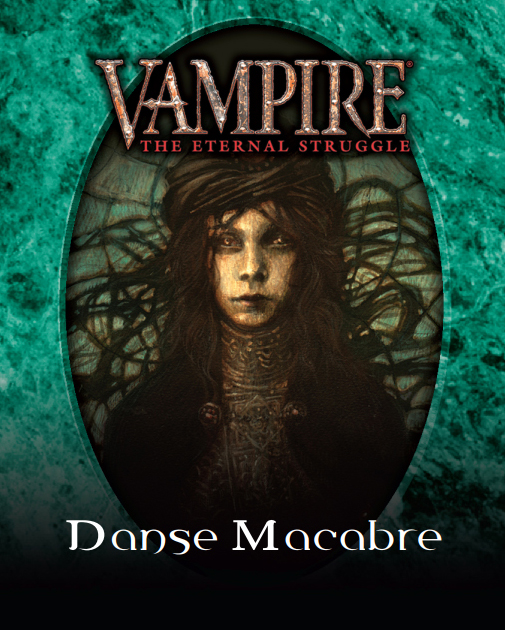
Danse Macabre – New art and card changes:
Inside Dirt (Card change: Burns 3 blood or 3 pool, instead of 2.)
Public Vilification (New art and card change: The blood stolen is now distributed amongst vampires.)
Recruitment Exercise (New art)
Show of Force (New art and card change: +2 strength at superior instead of +1 .)
Spoils of War (New art)
– Full card list at the product page

The Unaligned 1 – New art:
Bear’s Skin
Dam the Heart’s River
Hall of Mirrors
Priority Contract
Rewilding
Suspension of Disbelief
Valkyrie
– Full card list at the product page
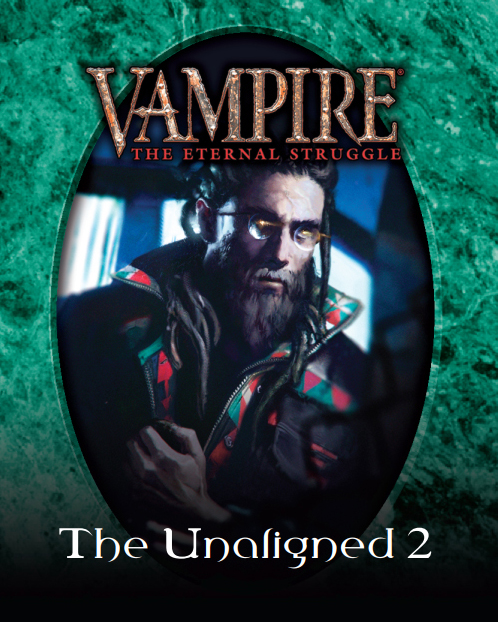
The Unaligned 2 – New art:
Art Morgan
Lupo Giovanni
Serpent’s Numbing Kiss
– Full card list at the product page
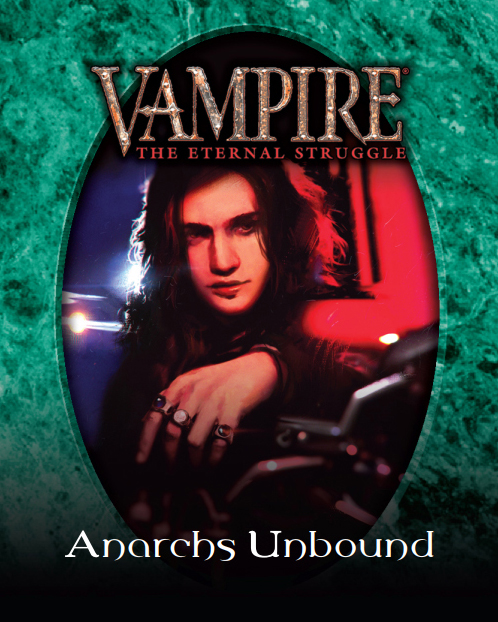
Anarchs Unbound – New art:
Bollix
Donnybrook
Eat the Rich
Irena
Netwar
Ni Dieu ni Maître
– Full card list at the product page
Check out the Kickstarter site!
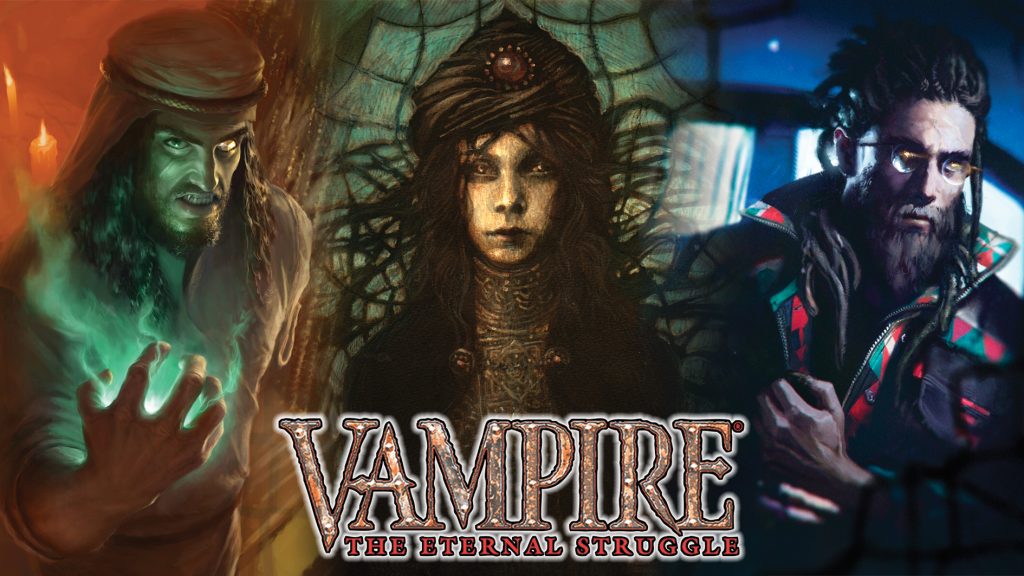
Copyright © 2025 Paradox Interactive AB. www.paradoxinteractive.com. All rights reserved. Vampire: The Eternal Struggle and Vampire: The Masquerade® are trademarks and/or registered trademarks of Paradox Interactive AB. All rights reserved.
Soon on Kickstarter: Vampire: The Eternal Struggle Unleashed

Four card bundles: Anarchs Unbound, Danse Macabre, The Unaligned 1 and The Unaligned 2. Stay updated by signing up at Kickstarter.com!
Legacy Volume 1 – one bundle with everything!
Legacy Volume 1 is a big bundle with one of each Legacy single card for Vampire: The Eternal Struggle currently published on Drivethrucards.com. That is 470 cards that you get for $141, which means a 14% discount compared to buying the cards individually. Perfect for collectors!

Copyright © 2025 Paradox Interactive AB. www.paradoxinteractive.com. All rights reserved. Vampire: The Eternal Struggle and Vampire: The Masquerade® are trademarks and/or registered trademarks of Paradox Interactive AB. All rights reserved.
Now on Drivethrucards: Direct Intervention
Hi all!
Black Chantry are delighted to tell you that a classic card is now available on Drivethrucards: Direct Intervention. Truly a Vampire: The Eternal Struggle staple, it is worth considering including in almost any deck. It hasn´t been printed since 2006, so it has been somewhat hard to get, but now it can be yours for just $0.35, with powerful new art by Ginés Quiñonero.
Some words from the artist:
When I started thinking about the art for Direct Intervention, I wrote down several ideas for its setting, that ranged from some ancient ruins under a blood storm to a bucolic or oneiric landscape. With reference to its characters, I knew for sure that a Methuselah had to be there. Maybe levitating, or perhaps rising from a sarcophagus, or showing a taste of their immense power.
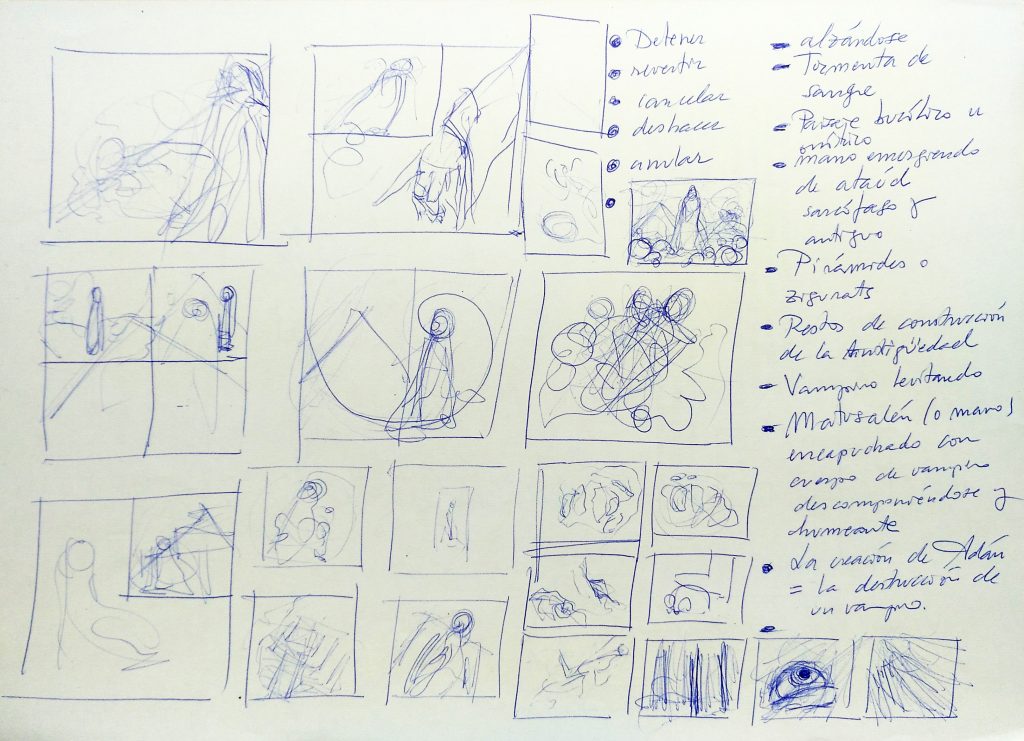
After that, I drew several composition sketches, and chose a scene with a close-up of a hooded Methuselah burning a vampire behind her, before the ruins of a ziggurat. However, that illustration did not come out the way I wanted, and opted for starting a new one.
This time, using a different composition and setting, with the Methuselah’s victim in the foreground, and the ancient vampire in the background, in the ruins of Persepolis.
For this artwork, I took into account two compositions: one for the full art, just in case it was used for a play mat; and another one for the card, which has a different aspect ratio.

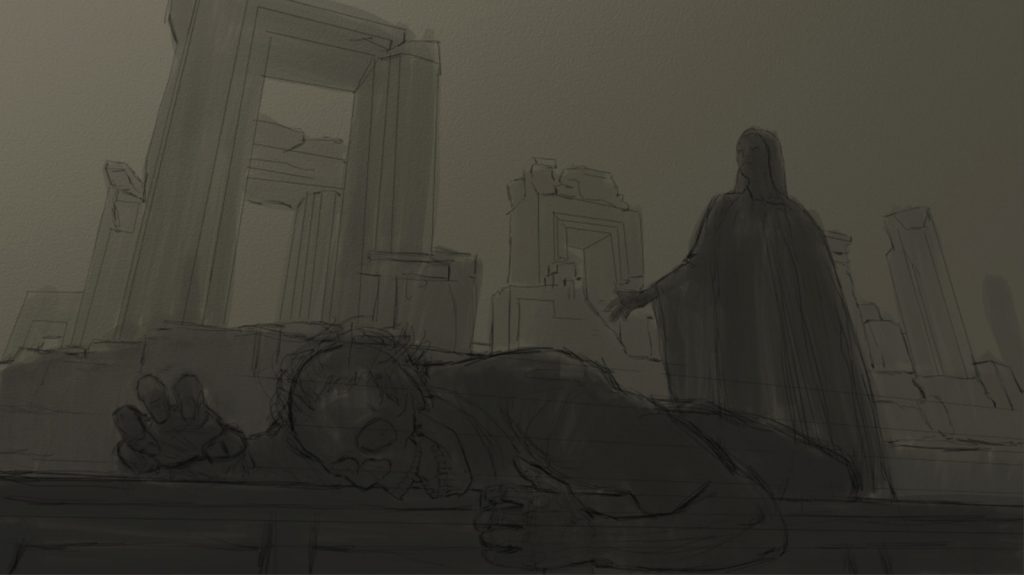
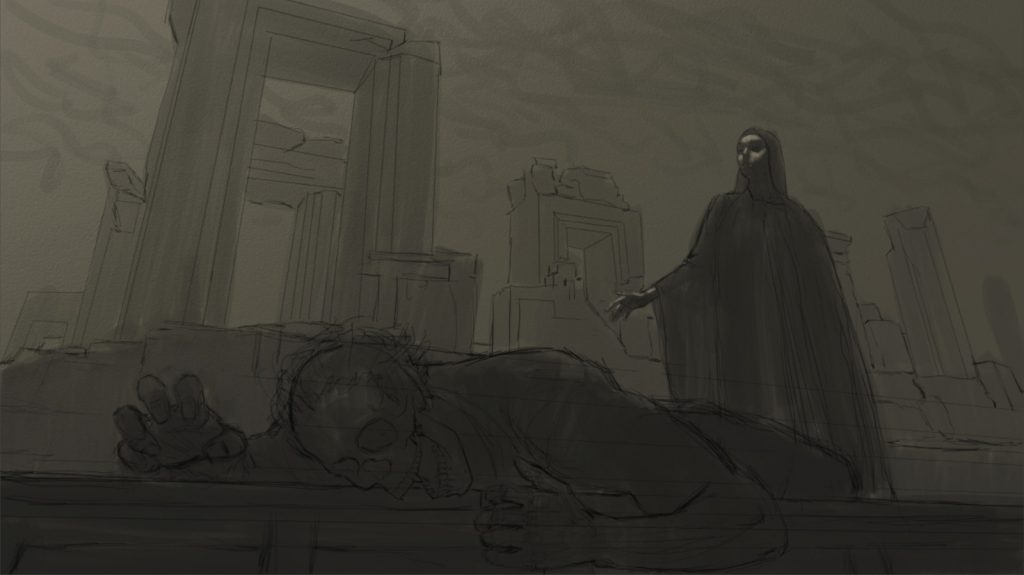

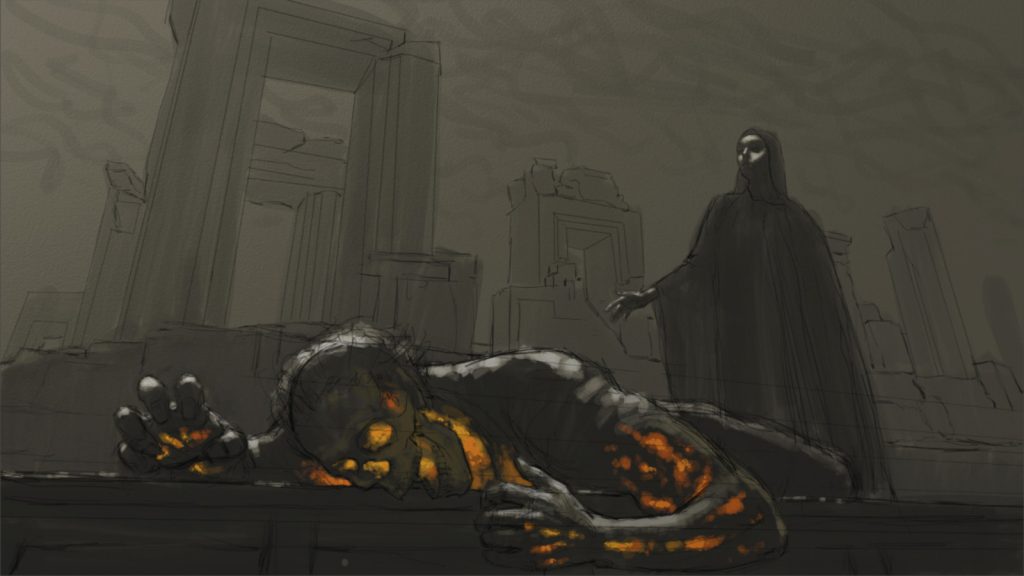
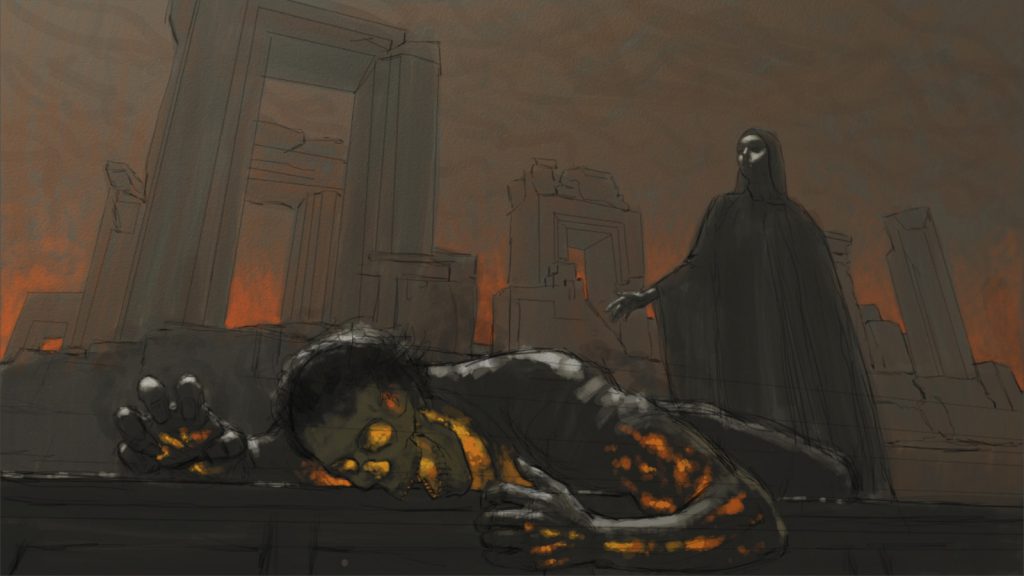
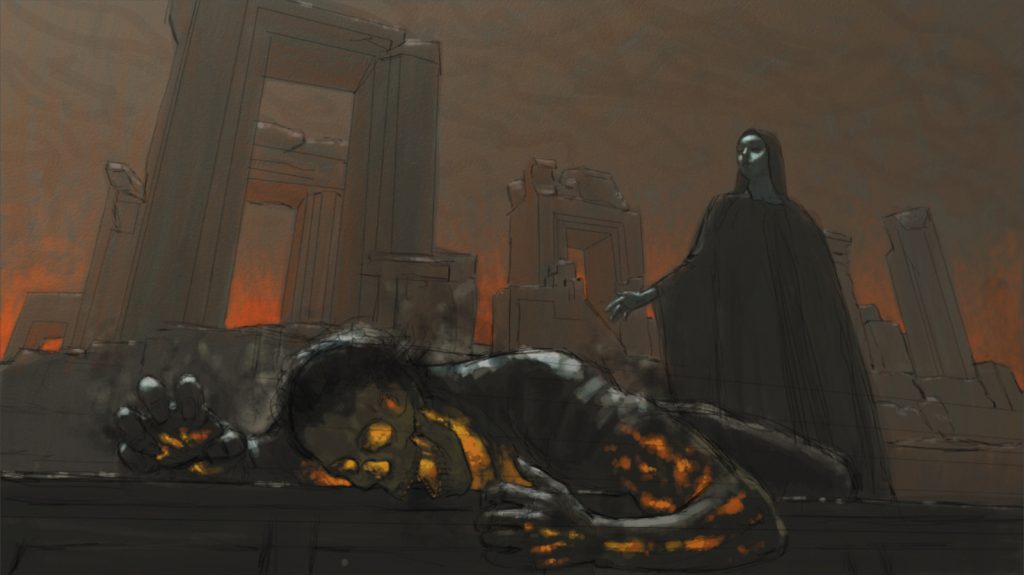
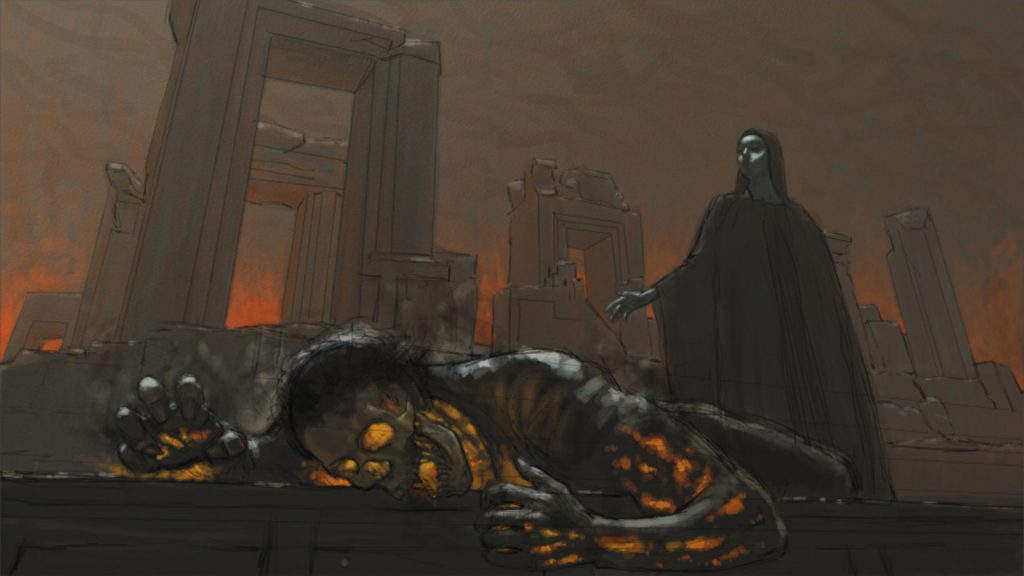
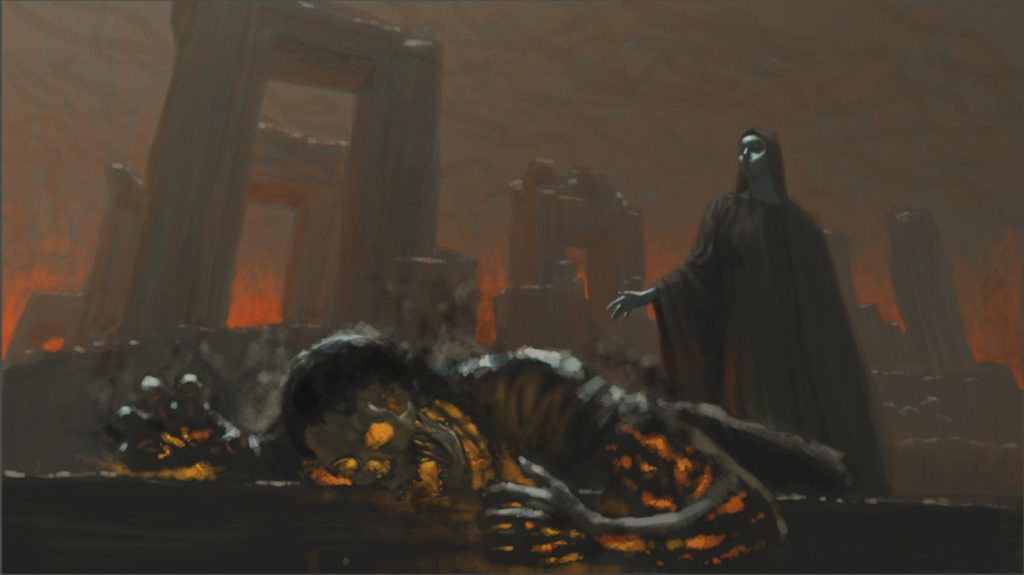

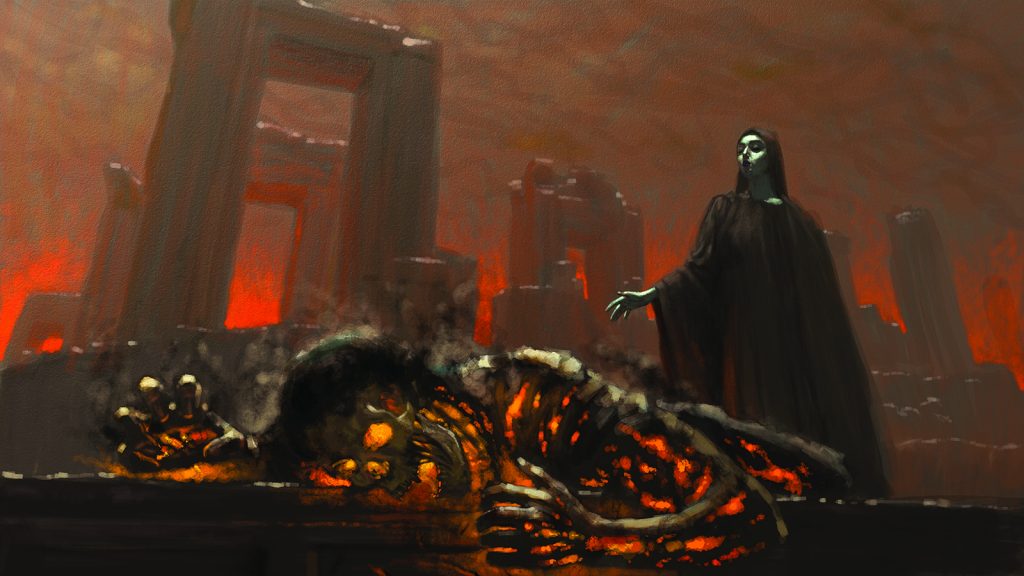
RELATED:
– 470 Vampire: The Eternal Struggle Legacy cards now at Drivethrucards!
– No, Vampire: The Eternal Struggle in Latin is not a joke
Copyright © 2025 Paradox Interactive AB. www.paradoxinteractive.com. All rights reserved. Vampire: The Eternal Struggle and Vampire: The Masquerade® are trademarks and/or registered trademarks of Paradox Interactive AB. All rights reserved.


